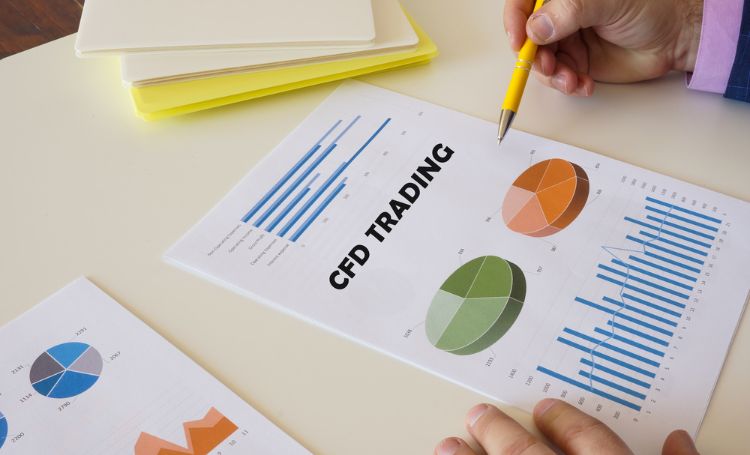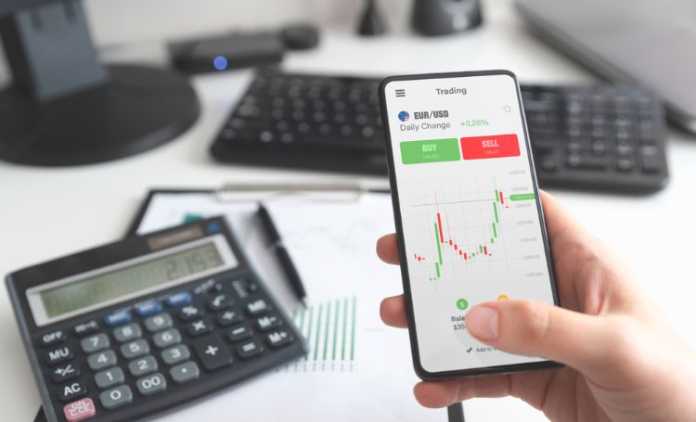The world of financial trading can be complex, filled with nuanced strategies and rapidly changing market conditions. Contract for Difference (CFD) is a popular and versatile choice among the various instruments available to traders. Building a robust CFD trading portfolio requires a comprehensive approach, considering multiple factors such as risk tolerance, investment horizon, and market analysis.
Following a step-by-step approach, you can craft a portfolio that matches your financial goals and remains resilient to market volatility.

- Identify Your Investment Goals
When identifying your investment goals in CFD trading, it’s essential to consider your time horizon and desired outcomes. If you seek short-term gains, you might focus on taking advantage of volatile market conditions and making quick trades. Conversely, if you’re looking for long-term growth, you may adopt a more patient approach and aim to profit from sustained market trends.
- Assess Your Risk Tolerance
Understanding your risk tolerance is crucial for building a robust CFD trading portfolio. Take the time to assess your comfort level with potential losses and fluctuations in the market. If the idea of significant downturns makes you uneasy, you may prioritize capital preservation and adopt a more conservative trading strategy. On the other hand, if you can handle the inherent volatility, you might consider a more aggressive approach that seeks higher returns.
- Research And Analyze Market Trends
To make well-informed decisions in CFD trading, staying updated on market trends and the factors influencing them is important. Watch global economic indicators, company earnings reports, and news that impact the financial markets. By analyzing these trends and conducting thorough research, you can better anticipate market movements and align your trades with your investment goals and risk tolerance.
- Diversify Your Investments
Diversification is a key risk management strategy in CFD trading. By spreading your investments across different assets and sectors, you reduce the impact of underperformance in any single area. Diversification can involve investing in various markets, such as stocks, commodities, indices, or currencies. It also includes considering different sectors and geographical regions. This approach helps mitigate risks and enhances the potential for overall portfolio growth.
- Stay Updated With Technical Analysis
While staying informed about market trends is important, technical analysis provides additional insights based on price movements and trading volume. Technical analysis can help predict potential price changes and market trends by analyzing historical data and identifying patterns. However, it’s essential to remember that technical analysis is not foolproof and should be used with other analytical tools to make well-balanced trading decisions.
- Review And Adjust Regularly
While staying informed about market trends is important, technical analysis provides additional insights based on price movements and trading volume. Technical analysis can help predict potential price changes and market trends by analyzing historical data and identifying patterns. However, it’s essential to remember that technical analysis is not foolproof and should be used with other analytical tools to make well-balanced trading decisions.
- Implement Stop-Loss And Take-Profit Measures
Proper risk management is essential in CFD trading. Implementing stop-loss and take-profit measures helps protect your capital and maximize profit potential. Stop-loss orders automatically close a position when the market moves against you beyond a predetermined level. Take-profit orders allow you to secure profits by automatically closing a position when it reaches a specific target. Employing these measures ensures that potential losses are managed and profits are secured.
- Stay Educated And Informed
The financial world constantly evolves, and staying informed is crucial for successful CFD trading. Commit to continuous learning by attending workshops, webinars, and seminars. Stay updated on industry news, technological advancements, and trading strategies. By continuously enhancing your knowledge and skills, you can adapt to market changes and make informed decisions, contributing to a robust CFD trading portfolio.
Common Pitfalls in CFD Trading and How to Avoid Them
Building a robust CFD trading portfolio requires following a step-by-step approach and knowing common pitfalls that can undermine your success. By understanding these pitfalls and learning how to avoid them, you can enhance your trading strategy and increase your chances of achieving your investment goals. Here are four common pitfalls in CFD trading and how to avoid them:
- Over-leveraging
One of the biggest mistakes traders make is over-leveraging their positions. While leverage can amplify potential profits, it also magnifies losses. To avoid this pitfall, it’s essential to use leverage wisely. Set strict risk management rules and only trade with leverage that aligns with your risk appetite and trading strategy. Remember that conservative leverage can help protect your capital in the long run.
- Ignoring Trading Costs
Trading CFDs involves costs such as spreads and overnight funding charges. Ignoring these costs can impact your overall profitability. It’s crucial to consider the costs associated with trading and factor them into your trading strategy. Compare different brokers to find the most competitive pricing structure, and carefully assess the impact of costs on your trades before entering into positions.
- Over-trading Or Emotional Trading Decisions
Over-trading can be detrimental to your trading performance. It often stems from emotional reactions to market fluctuations or a desire to recoup losses quickly. To avoid over-trading, stick to your trading plan and predefined strategy. Set clear entry and exit criteria based on technical or fundamental analysis, and avoid making impulsive decisions. Emotional discipline and patience are key to long-term success in CFD trading.
- Neglecting Continuous Education
CFD trading is a dynamic and ever-evolving field. Neglecting continuous education can lead to outdated trading strategies and missed opportunities. Stay informed about market trends, new trading techniques, and risk management strategies. Read books, attend webinars, follow reputable trading blogs, and consider joining professional trading communities. Expanding your knowledge will help you adapt to changing market conditions, refine your trading approach, and make informed decisions.
Benefits Of A Robust CFD Trading Portfolio
A robust CFD trading portfolio has numerous benefits that can help you achieve your investment goals. Here are three key advantages of having a well-diversified CFD trading portfolio:
- Potential For Higher Returns
One of the primary benefits of a robust CFD trading portfolio is the potential for higher returns. Diversifying your investments across different instruments and markets can help you capitalize on different profit opportunities. Maintaining a balanced portfolio can minimize the risk of significant losses and benefit from positive market trends.
- Flexibility To Trade In Various Market Conditions
Another significant advantage of a well-diversified CFD trading portfolio is the flexibility to trade in various market conditions. Different instruments and markets have their unique drivers and characteristics. Expanding your investment universe allows you to take advantage of opportunities in different market conditions. For example, during periods of high market volatility, you may invest in more defensive positions, such as commodities or currencies, while during periods of market expansion, you may shift to more aggressive positions, such as stocks or indices.
- Hedging Opportunities Against Other Investment Positions
A robust CFD trading portfolio also offers an excellent opportunity for portfolio hedging. By holding positions across different asset classes, CFD traders can hedge against potential risks posed by other investments in their portfolios. This can help reduce overall portfolio risk and boost returns.
Conclusion
Building a robust CFD trading portfolio isn’t an impossible challenge. By following a systematic approach, staying informed, and being adaptable, you can craft a portfolio that aligns with your goals and remains resilient amidst market fluctuations. Remember, the journey in CFD trading is as crucial as the destination. Stay committed, continue learning, and always strive for informed decision-making.



























